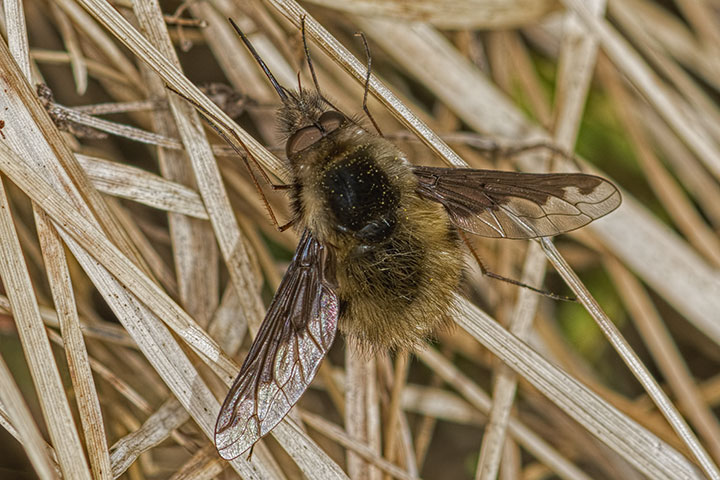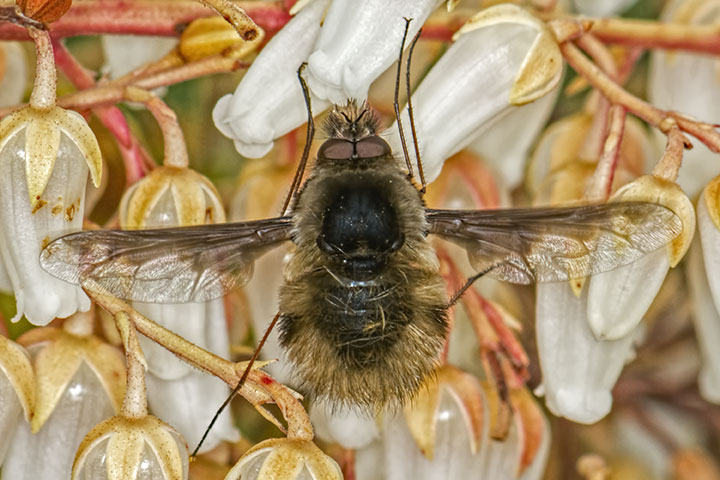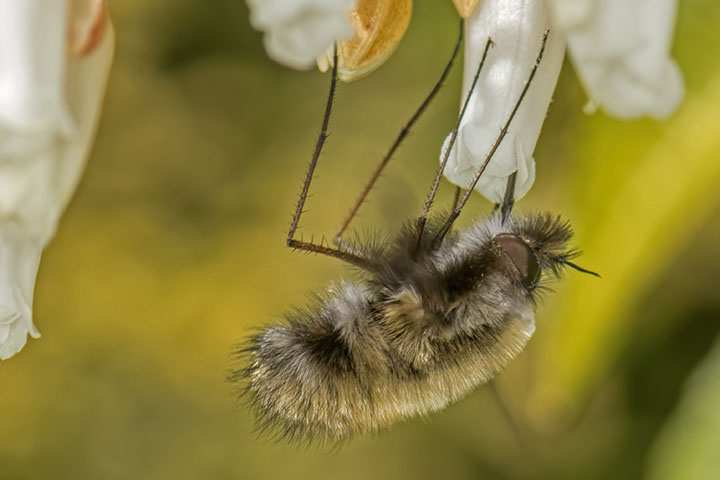This is the season for viewing a Bombylius fly. Last year’s posting about this bee-mimic fly was also made mid-April. This year’s images are strikingly similar, same species, same dried grass, same flowers. The difference is that I now know a little bit more about this flying ball of fuzz.
This year, I am fairly confident that the fly shown here is a Bombylius major, a species found throughout North America and Eurasia. That it mimics bees is, of course, a tactic to avoid being eaten by birds (and wasps?) as it goes about sipping nectar from flowers.
It only appears in the spring because that is the time solitary bees temporarily leave their nest sites unprotected. Unlike the social bees, each solitary bee lays her own eggs and does so in a small tunnel she has provisioned with food such as nectar and pollen. She then seals the entrance. However, for the short time it takes to do this, the tunnel entrance is open and that is when the Bombylius fly comes by and deposits its own eggs inside. The Bombylius larva emerges, feeds on the provisions meant for the bee larvae; it then changes form and eats the bee larva, itself. Bombylius has only a short time in the spring to give its offspring this opportunity.
This Bombylius major may be warming itself in the sunlight. The picture shows the fly’s particularly long proboscis and legs. The usefulness of these will be seen in the last picture.
The adult fly lives off nectar.
Often this fly does not land on the flower, but hovers adjacent to it (here, its wings are blurred by hovering). Its long proboscis enables it to sip nectar and it merely stabilizes itself with its long legs. Not actually landing on the flower is probably a defensive tactic against crab spiders that pounce on flies that do land.

Very interesting Alistair. Clever little mimic making life so easy for itself.
Terrific sequence, Alistair. I didn’t know about the little fuzz-ball’s fascinating life history, so many thanks for sharing that with us.